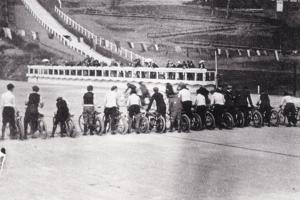Production of the 3 Litre was slow at first but Bentley’s order books were soon packed with the names of wealthy and aristocratic clients, including Prince George (later the Duke of Kent), the Prince of Wales (Edward VIII) and the Duke of York, later King George VI. The 3 Litre remained in production until 1929, and models included the standard wheelbase Blue Label (for which Bentley literature claimed “with four passengers it is guaranteed the machine will lap Brooklands at 75mph”), Red Label Speed and 100mph Green Label models.
As was usual with prestige car makers during the 1920s and 30s, Bentley supplied the engine, drivetrain, suspension and chassis, leaving the choice of bodywork for the client. Some customers chose heavy, enclosed four-seater bodies which sapped the performance of the 3 Litre, and this trend prompted W.O. to develop the six-cylinder 6 ½ Litre Bentley. Other models produced at Cricklewood during the 1920s included the 4 ½ Litre, Speed Six and 8 Litre.
However as a sporting open tourer the 3 Litre was well in advance of its rivals, offering continent-crossing speed and stamina. It remained the mainstay of the Bentley range in production volumes until 1927.



